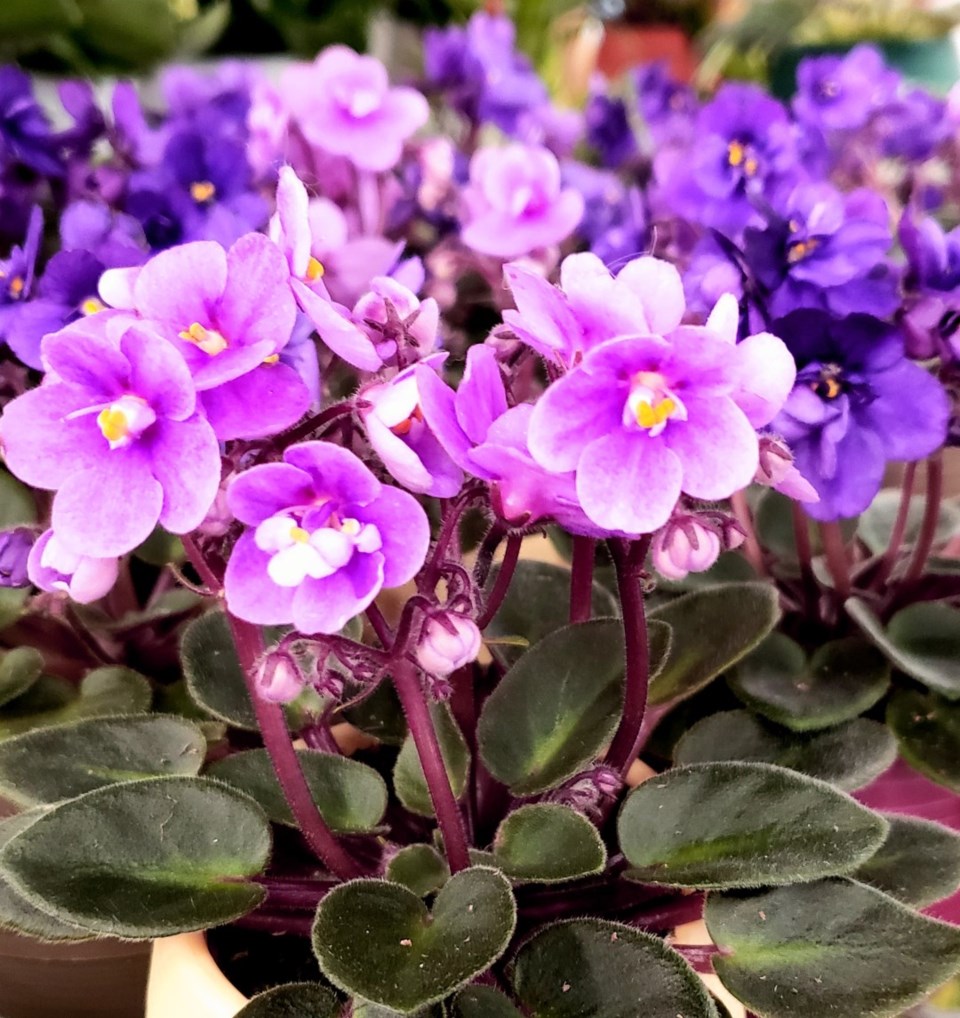African Violets are a great houseplant that can help you to get through the long, cold days of winter. These hardy and well-behaved houseplants are native to the higher elevations of Tanzania and get their original Latin name from a 19th century colonial official and amateur botanist, Baron Walker von Saint Paul-Illaire, who was stationed in east Africa. He sent some specimens of these violets home to Germany and in a short time, these plants were available throughout Europe.
These plants are known as friendship plants and are often used as a symbol of loyalty, devotion and faithfulness. With the proper care, they can provide almost continuous blooms in a rainbow of colours and leaf shapes. The flower, petal and colours will vary widely, but plants are generally quite small ranging from four inches (10 cm) to seven inches (18 cm) in height.
They thrive in low-light locations in the home and because of their sheer popularity, we are seeing hundreds of new varieties that have been developed for their unique colours and shapes including the development of half-sized miniatures. They are small perennial herbs with thick, hairy, ovate leaves. They generally have long petioles (the leaf stem) and the stems are arranged in a basal cluster at the base of the plant. The violet-like flowers have five petals and are generally violet, white or pink in colour. The tiny seeds are produced in a capsule after bloom.
African Violets are often considered the almost perfect houseplant as they have no specific flowering season. They tolerate our low humidity, heated homes in the winter as they have thick, hairy leaves that protect them against water loss. They also prefer the lower light levels of winter and do very well when it is dark and cold outside.
They prefer a regular soilless growing mix, in which added perlite has been added. Let the soil surface become dry to the touch before watering as the easiest way to kill and African Violet is by overwatering. Water from the bottom or carefully from the top with lukewarm water as the leaves are easily damaged if cold water drops upon them. A dilute mixture of high phosphorus fertilizer can be used in spring to help keep them thriving. They do prefer a nighttime temperature that is cooler than the daytime temperature.
If you find that your African Violets are not blooming they likely need a bit brighter light but never do, they like to be in direct sunlight. An east or north facing window is best and for those homes that are really dark, rotating these plants under a grow light to entice the bloom is a good option. If the plants are too close to the grow lights, the growth will be very dense and compact and can even be bleached out. Alternatively, if the stems become very long with the leaves stretching towards the light source, there is not enough light to support good growth.
One of the best characteristics of African Violets is they do not attract many pest or disease problems. Sometimes mealy bugs will appear on the underside of the leaves but if caught promptly, they are easily removed by touching them with a q-tip dipped in isopropyl alcohol.
Hanbidge is the Lead Horticulturist with Orchid Horticulture. Find us at ; by email at [email protected]; on facebook @orchidhort and on instagram at #orchidhort. Tune into GROW Live on our Facebook page or check out the Youtube channel GROW




